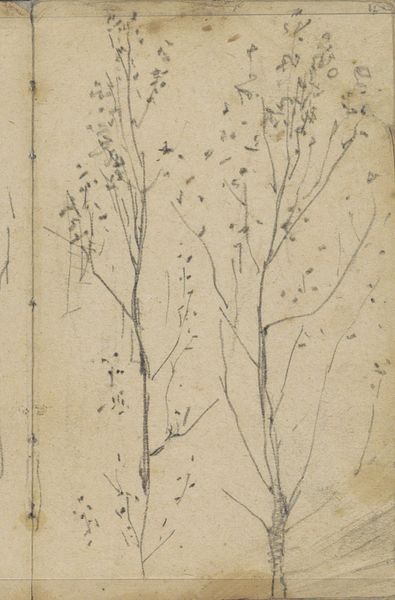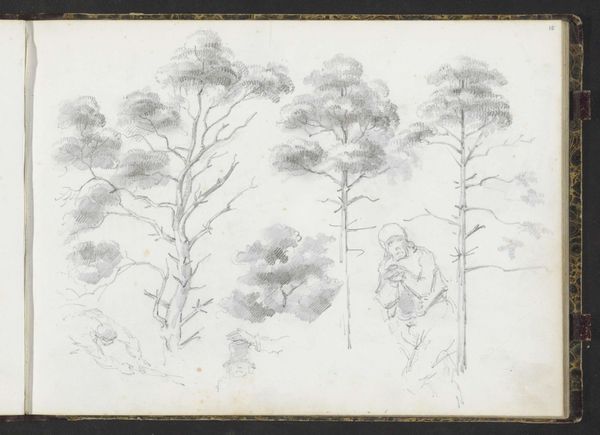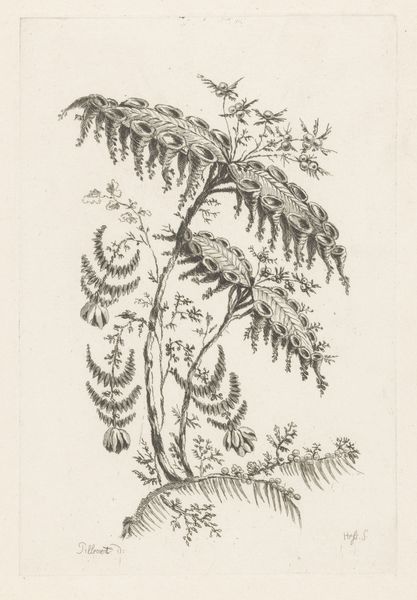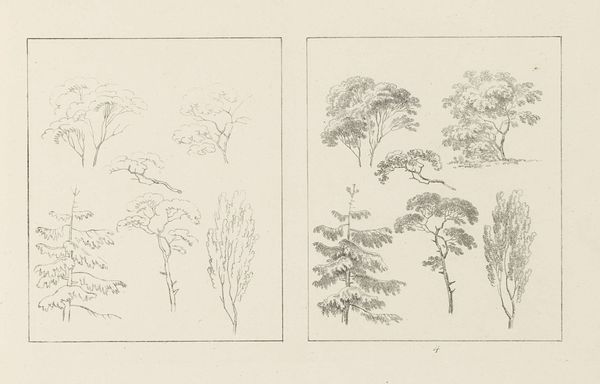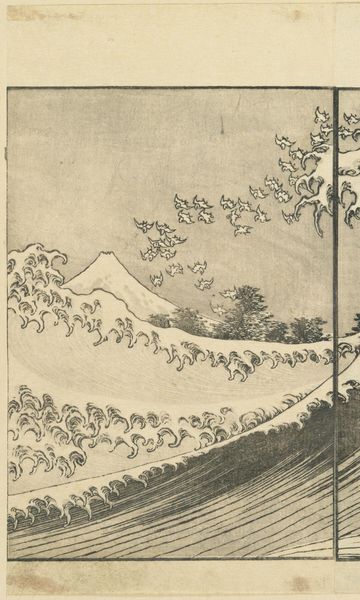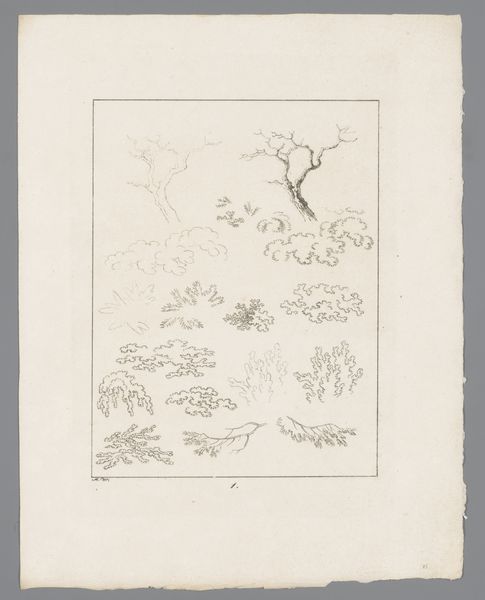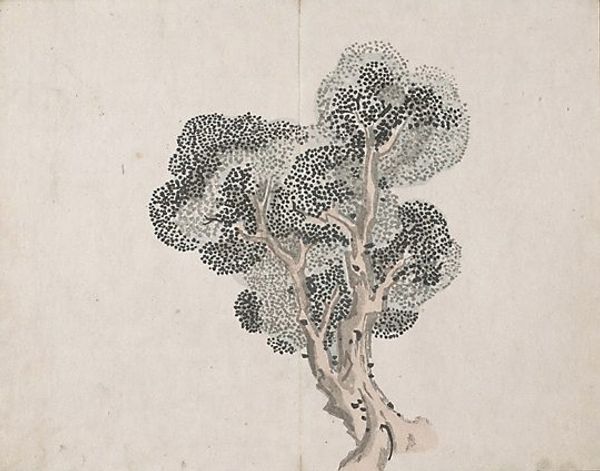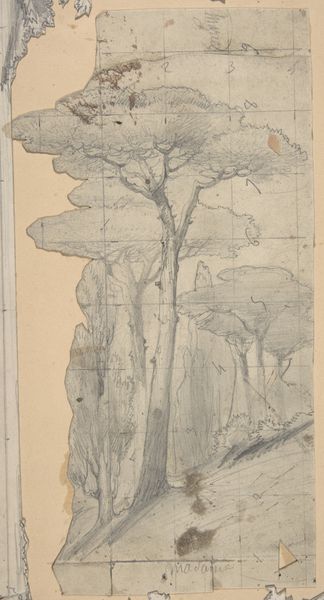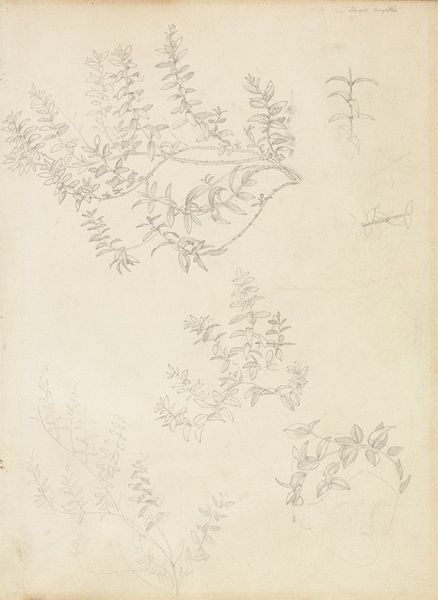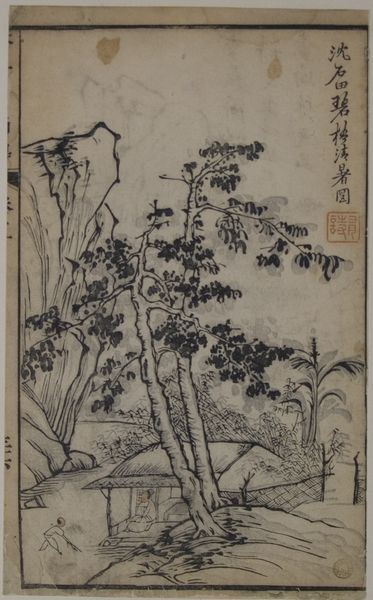
drawing, ink
#
drawing
#
asian-art
#
landscape
#
ukiyo-e
#
figuration
#
ink
#
line
Dimensions: height 186 mm, width 131 mm
Copyright: Rijks Museum: Open Domain
Editor: So, this is "Landschap met bomen," a landscape drawing from sometime between 1800 and 1900 by Hokusai, using ink. It feels almost like a botanical study, a little austere but with an undeniable elegance in the lines. What strikes you most about this piece? Curator: The emotional weight of these trees! Notice how each is rendered uniquely. This isn't just observation; it's a form of visual language, a vocabulary. Hokusai gives us pines, each a vessel of meaning. Do you get a sense of how pine trees may have been viewed? Editor: Well, I'm guessing they are a symbol? Maybe longevity, strength, something like that? Curator: Exactly! Pines often represent steadfastness, resilience, even immortality in East Asian art and culture. The variations he gives us – from the dense clusters of needles to the sparse, reaching branches – speak to different aspects of that core symbolism. Look at how the brushstrokes capture their essence. It invites us to contemplate nature's enduring presence. Editor: It’s interesting that you see symbolism so clearly. I was initially just admiring the aesthetic quality of the brushstrokes. It does add a deeper dimension to it when considering these trees aren't just trees. Curator: Indeed. It's about seeing beyond the surface, recognizing the layers of meaning imbued within. What starts as observation evolves into an entire discourse on human connection with nature, cultural memory, and visual metaphor. Editor: I’m definitely going to be more aware of that when looking at this kind of landscape art now. I guess it's never just what it seems. Curator: Precisely. It is an invitation to listen to what images have to say about our shared symbolic history and memory.
Comments
No comments
Be the first to comment and join the conversation on the ultimate creative platform.
